Apple seems to be in a league of its own with the Watch. In the September 2022 event, the tech giant launched a brand new addition to its smartwatch lineup alongside Apple Watch Series 8 and the second-gen SE, Apple Watch Ultra. Undoubtedly, they went extreme with Ultra, packing it with the precision Dual Frequency GPS. The same feature is also added to the iPhone 14 Pro lineup.
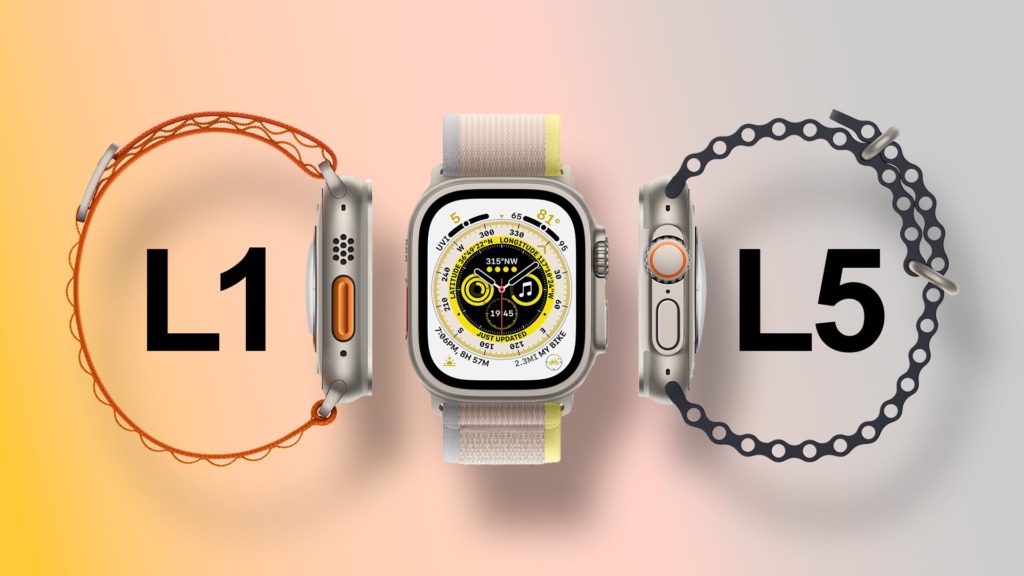
It’s no secret that one of our favorite features is the ability to use GPS for navigation whether it’s right from our wrist or via the smartphone. But the GPS is already precise. So what’s the need for dual frequency band GPS?
Well, Apple attempts to increase the accuracy of GPS signals through this process. But the feature isn’t new in itself. If you have a OnePlus, Xiaomi, or even a Huwaei handset, you might already be using this feature. Let’s dig in to find out more about it and whether you need it.
What is Dual Frequency Band GPS
The turn-by-turn directions on your navigation app are a result of a GPS signal received from a satellite. Like all electronic signals, GPS also operates on a certain frequency system. The range of frequencies over which the signal operates is called a frequency band and there are multiple frequency bands. Today, most GPS systems operate on a single frequency band – called the L1 band (more on it later).
Now, to increase the pinpoint location accuracy, a device can be built to use an additional frequency band. This is called a Dual Frequency GPS. It was one of Apple’s main focuses when they unveiled the new range of Apple Watches and the iPhone 14 Pro Series. (Don’t miss out on these all-new iPhone 14 series wallpapers).
Let’s look into the difference between single and dual-frequency GPS in detail.
Single vs. Dual-Frequency GPS
The most prominent difference is that a traditional single-frequency GPS offers accuracies of up to 5 meters, whereas a dual-frequency GPS can offer accuracies on a centimeter level.
As mentioned earlier, most single-frequency devices have been using the L1 band for years now. And the biggest limitation of the L1 band is that its signal can’t bypass tall objects, atmospheric distortion, or even dense foliage in the path. This leads to inaccuracies.
This is where the dual-frequency system proves efficient. Apple uses the L1 band along with the L5 band in the dual-band system to overcome the limitations associated with the former band.
While it would make more sense to use the L5 signal alone for more GPS accuracy, it isn’t possible. The L5 band is currently in its pre-operational stage. Hence, Apple combines L1 and L5 to deliver the best without hiccups. In the near future, we might see L5 signals powering our GPS experience on iPhones; you never know.
How Does the Precision Dual-Frequency GPS Work
The main objective of a dual frequency system is to improve the quality of the input signal by reducing noise and removing errors. A major error that hampers signal processing is called multi-path error.
What Are Multi-Path Errors
When you request navigation data, you use your watch (or phone) as a receiver requesting signal and information from a satellite, the transmitter. Now, the signal has to travel from the satellite (transmitter) to your device (receiver).
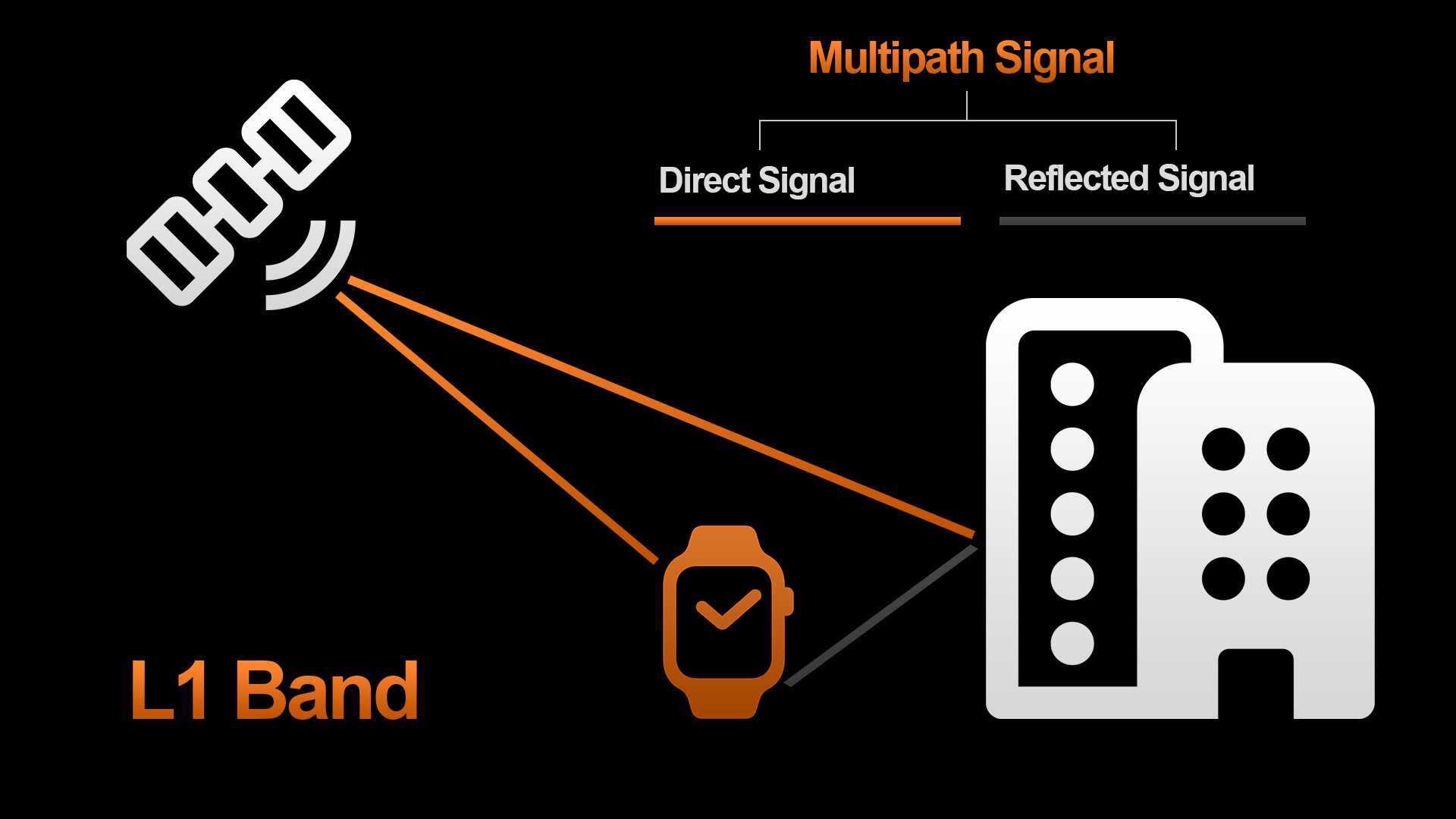
The path between the two is not clear and has a lot of objects in between, from larger objects like skyscrapers to smaller objects like particles in the ionosphere. The signal will reflect off these objects to form multiple signal paths. These reflected, new signal paths will not contain any useful information.
This will lead to errors in the received information, and they are called Multi-path errors and this needs fixing.
How Does the L5 Frequency Band Strengthen GPS Signals
The L5 band has a lot of advantages over the L1 band, like higher power, and higher accuracy but one main advantage is its ability to detect unwanted reflected signals caused by multi-path errors. So, once the L1 + L5 bands are in action, they identify unwanted signals and ensure that they do not affect the output information at the receiver’s end.
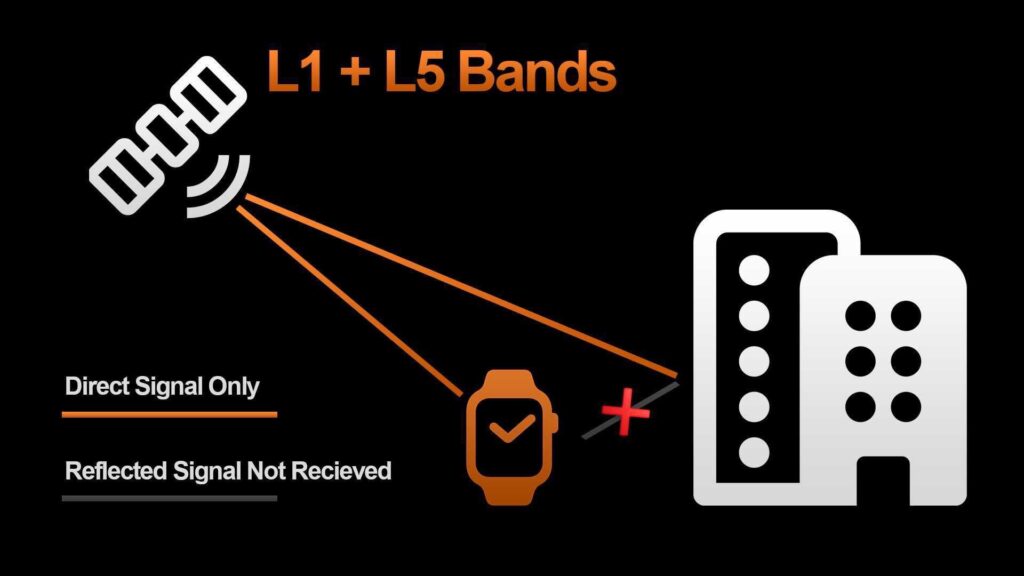
Another parameter we need to know is the chip rate – the number of pulses per second that are transmitted or received. The chip rate of L5 signal bands is nearly ten times greater than the L1 signal bands. Error reduction capability is directly proportional to the chip rate. Thus, the errors and noise are reduced ten folds when an L5 band is used.
Do You Need a Dual-Frequency GPS Device
The objective of a dual-band frequency system is to improve the precision of GPS data. But let’s face it, we don’t have a lot of users complaining about the current, single-band GPS technology. So who is it meant for?
Apple gave us a relatable example during the launch event – the Chicago Marathon. The path of the marathon has a lot of skyscrapers and as mentioned earlier, this might lead to some inaccuracies in the GPS signal. So, the dual-frequency system can help.
Moreover, if you are an adventure lover and often venture out in the wilderness or live in areas where there is little connectivity, the dual frequency system is for you. Moreover, Apple also released an emergency SOS via satellite feature for your safety.
Since this is present on the iPhone 14 Pro series as well, we’re sure another use case can be using this system to control and land drones safely. A centimeter-level accuracy can help you accurately monitor and position your drones.
Now, we need to wait for these devices to face real-world tests to see how the new GPS fares and see if it can help in more situations than we can think of.
Dual Band GPS for Ultra GPS Accuracy
That was everything you need to know about the dual band GPS on Apple Watch Ultra. What’s fascinating is that this technology was used only in high-end industrial systems. The L5 band is also a band that was earlier reserved for aviation radio services only. But thanks to the availability of low-cost components, we can see it on devices like the Apple Watch Ultra. We’re quite excited to see how it plays out in the real world, and we hope you are too!
Was this helpful?
Last updated on 14 September, 2022
1 Comment
Leave a Reply
The article above may contain affiliate links which help support Guiding Tech. The content remains unbiased and authentic and will never affect our editorial integrity.

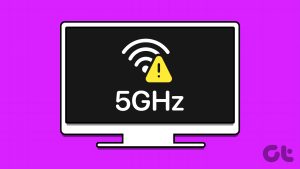
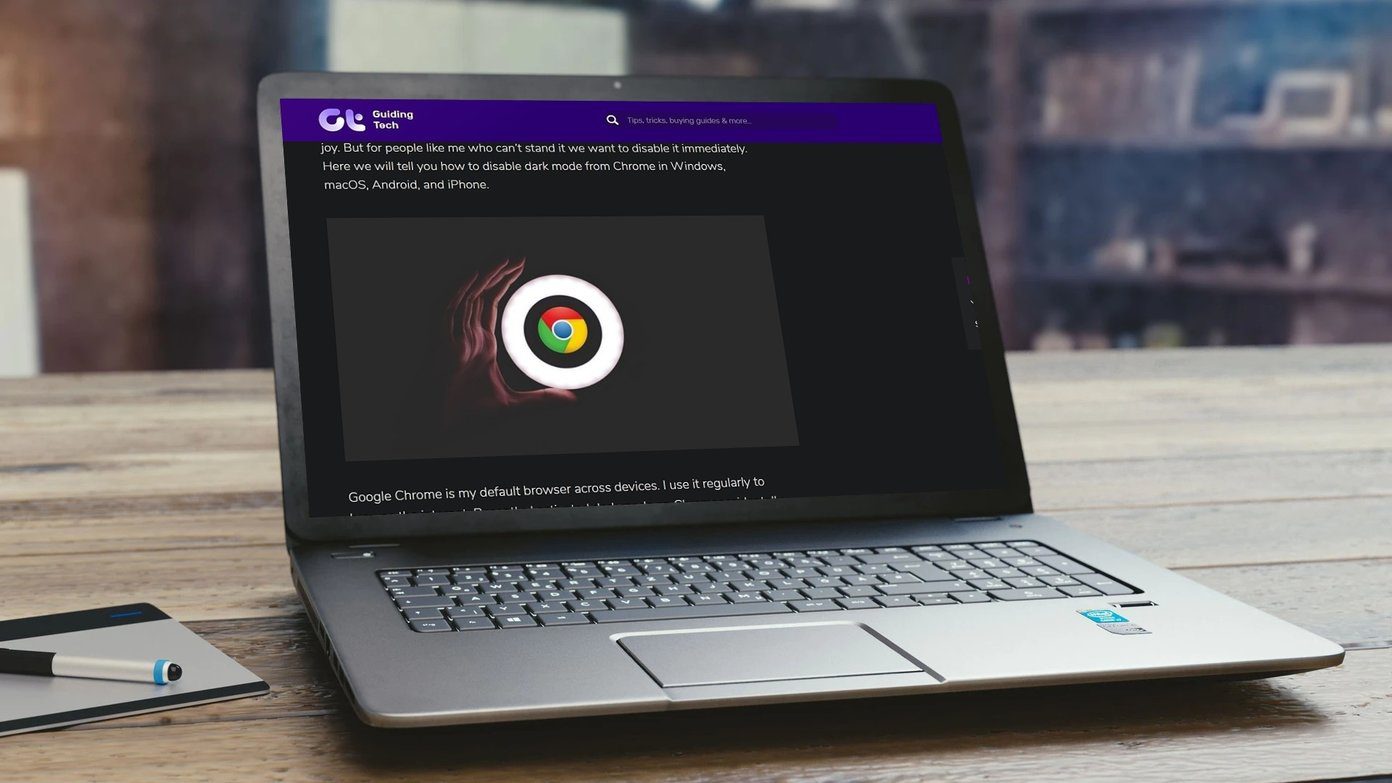
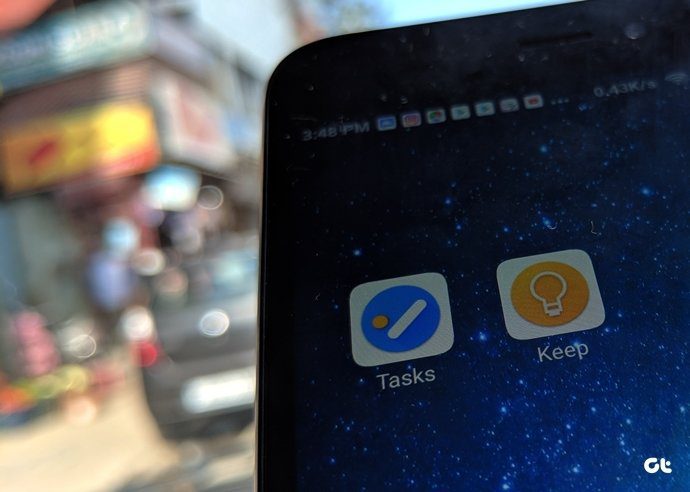
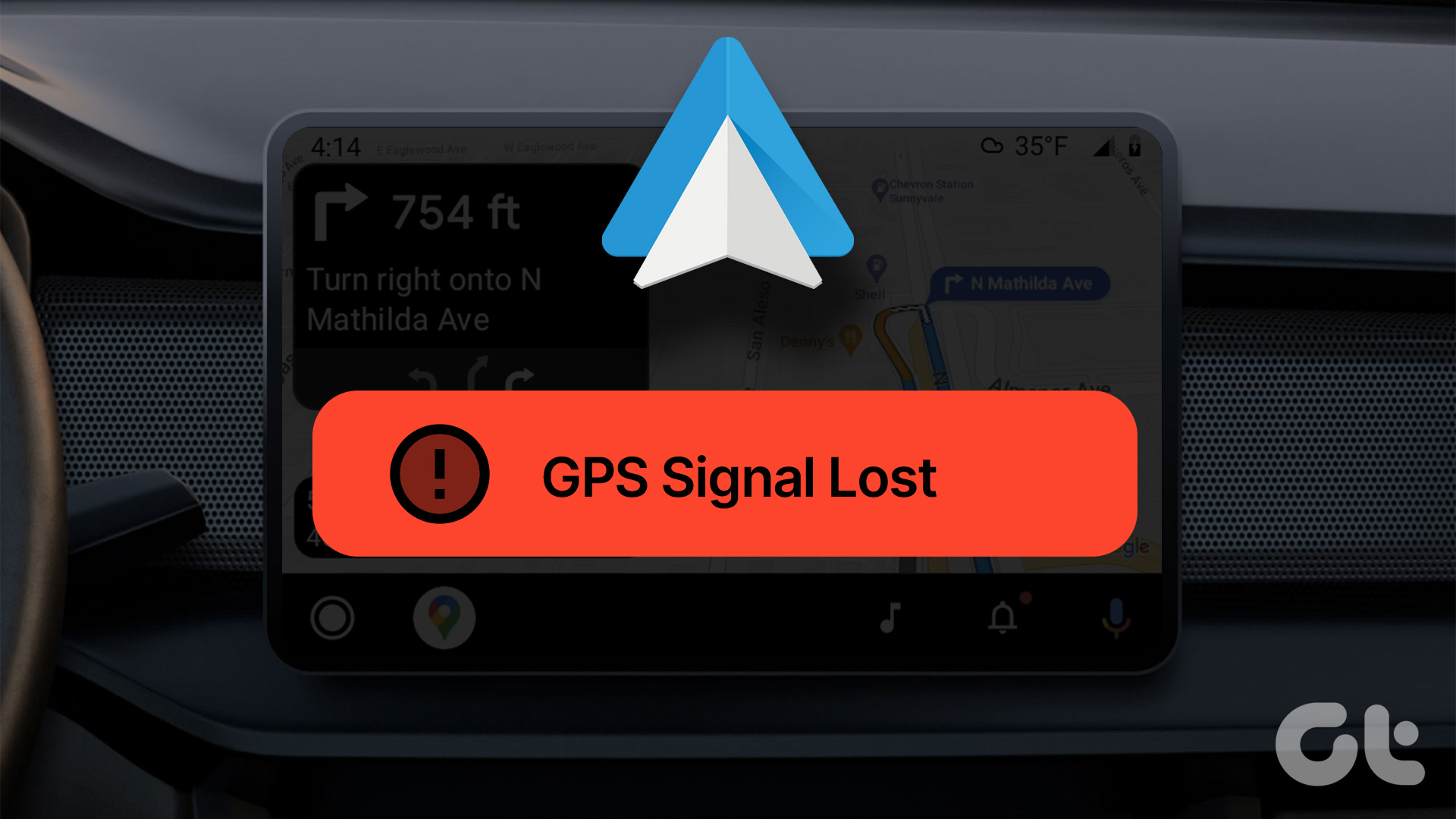
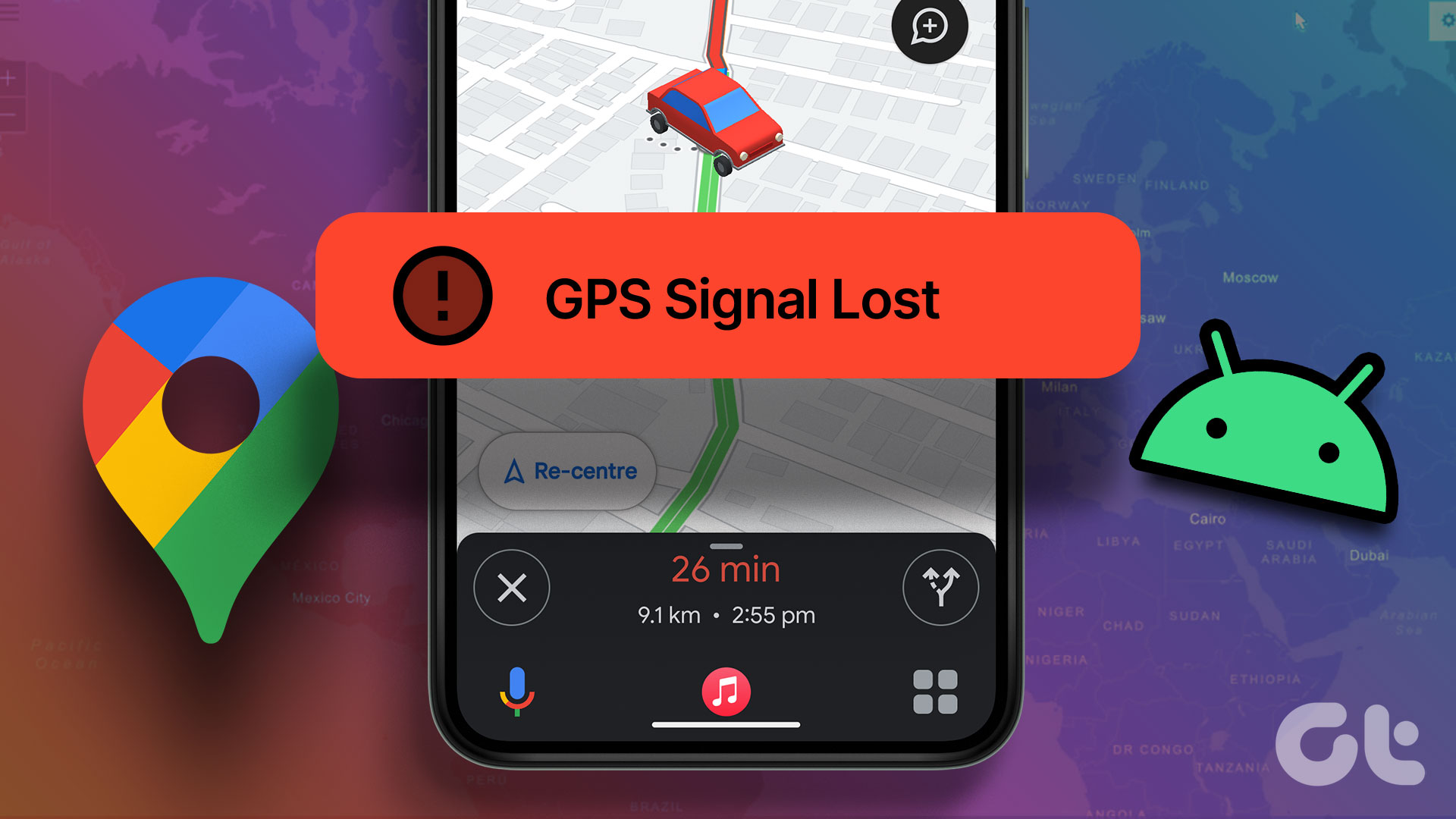
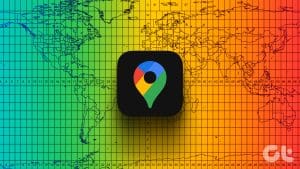
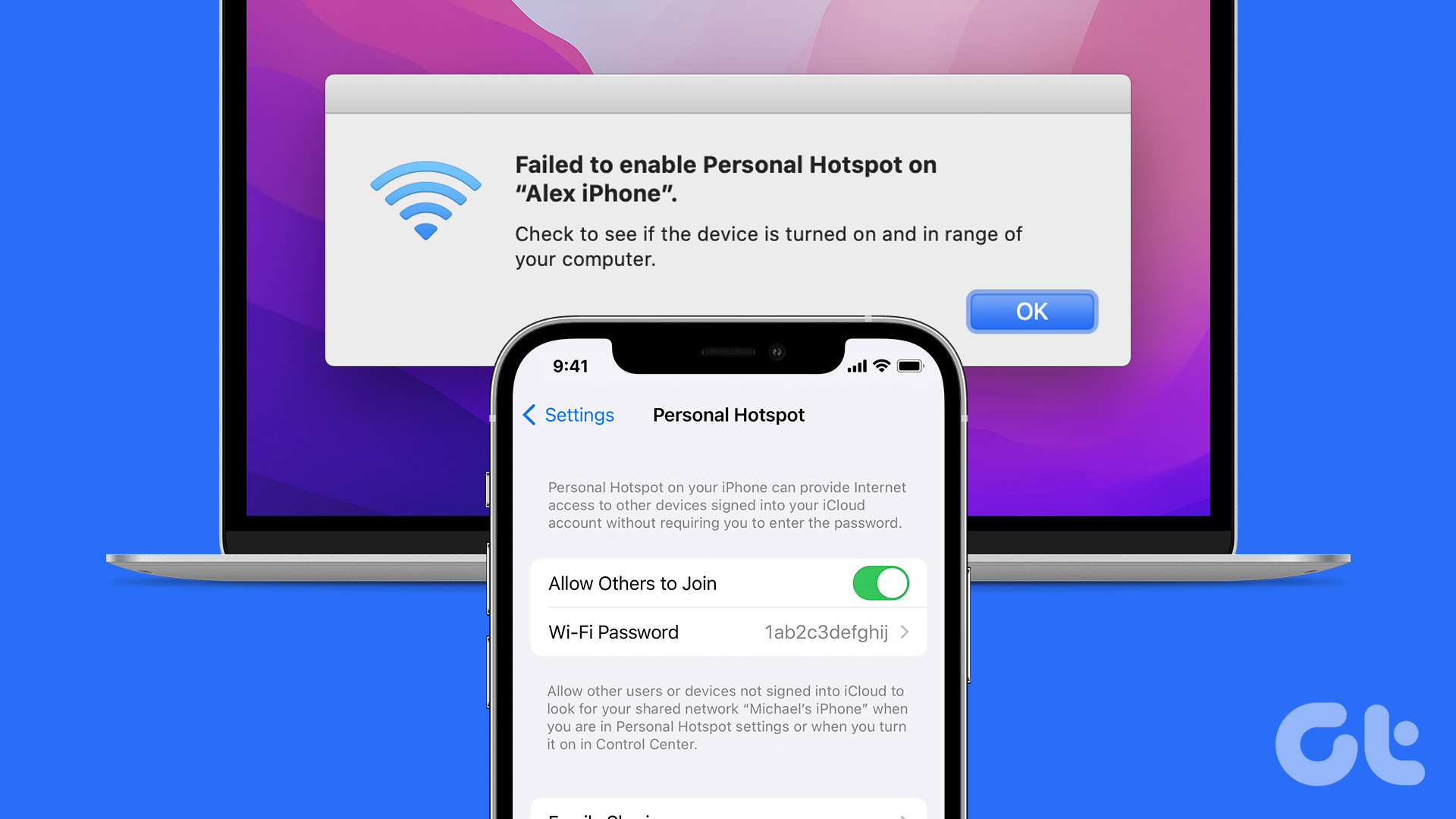
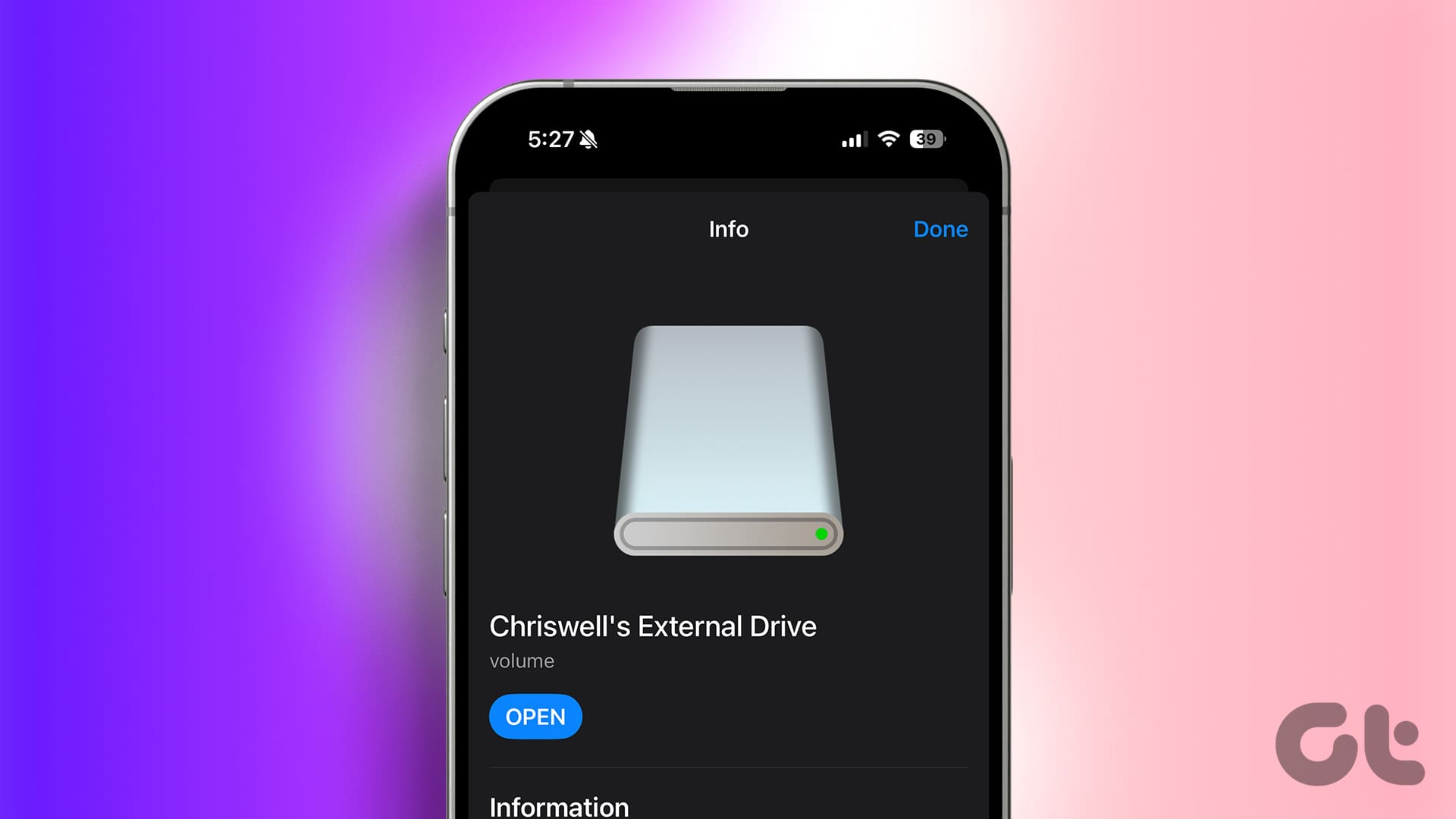
M. Koundinya,
thank you for your article about two frequency GPS. From my reading I think that crucial, or a crucial benefit of a dual frequency is that that the delay from the path delay ionosphere can be estimated. The satellite radio waves are delayed through the app ionosphere by an amount closely related to their frequency so if you have two frequencies of radio waves on the same satellite you can make a good estimate of what they honestly it to Leah each of them is. This delay has been the bane of precision positioning in navigation. having an L1 and L5 signal emanating from the same satellite gives you a very precise estimate of that delay in this much better idea of your actual pseudo ranges or actual distance from you to each satellite.
RTK and perhaps PPP, infusion of GPS with that I am you Gyro and accelerometer Dana Hall very promising to the proof is in the implementations..l I look forward to reading more of your articles.
Thank you